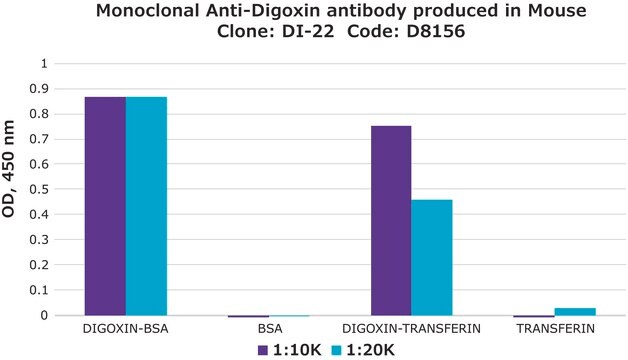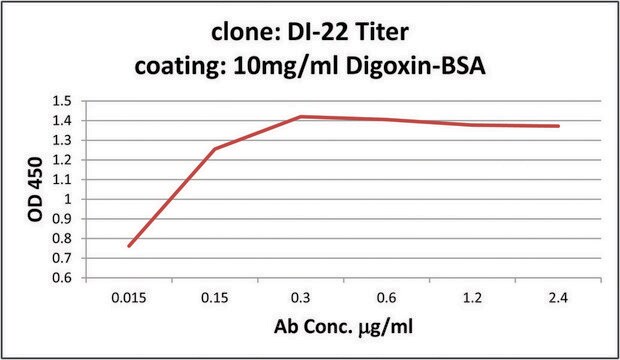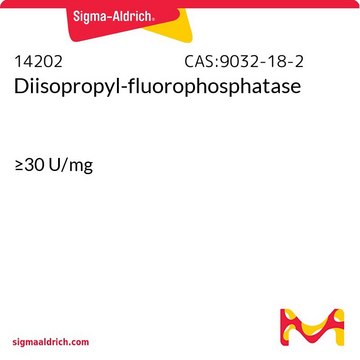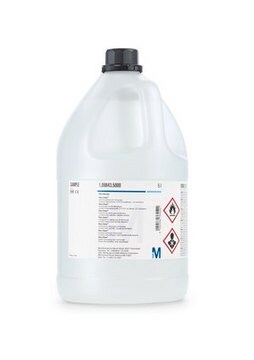B7405
Anti-Digoxin−Biotin antibody, Mouse monoclonal
clone DI-22, purified from hybridoma cell culture
Sinonimo/i:
Monoclonal Anti-Digoxin, Monoclonal Anti-Digoxin−Biotin antibody produced in mouse
About This Item
Prodotti consigliati
Origine biologica
mouse
Livello qualitativo
Coniugato
biotin conjugate
Forma dell’anticorpo
purified from hybridoma cell culture
Tipo di anticorpo
primary antibodies
Clone
DI-22, monoclonal
Forma fisica
buffered aqueous solution
tecniche
indirect ELISA: 1:10,000 using digoxin-labeled biomolecule
western blot: 1:500 using using digoxin-labeled biomolecule
Isotipo
IgG1
Condizioni di spedizione
dry ice
Temperatura di conservazione
−20°C
modifica post-traduzionali bersaglio
unmodified
Cerchi prodotti simili? Visita Guida al confronto tra prodotti
Categorie correlate
Descrizione generale
Specificità
Immunogeno
Applicazioni
- in situ hybridization
- immunohistochemistry
- immunolocalization
Azioni biochim/fisiol
Stato fisico
Esclusione di responsabilità
Non trovi il prodotto giusto?
Prova il nostro Motore di ricerca dei prodotti.
Codice della classe di stoccaggio
10 - Combustible liquids
Classe di pericolosità dell'acqua (WGK)
nwg
Punto d’infiammabilità (°F)
Not applicable
Punto d’infiammabilità (°C)
Not applicable
Certificati d'analisi (COA)
Cerca il Certificati d'analisi (COA) digitando il numero di lotto/batch corrispondente. I numeri di lotto o di batch sono stampati sull'etichetta dei prodotti dopo la parola ‘Lotto’ o ‘Batch’.
Possiedi già questo prodotto?
I documenti relativi ai prodotti acquistati recentemente sono disponibili nell’Archivio dei documenti.
I clienti hanno visto anche
Il team dei nostri ricercatori vanta grande esperienza in tutte le aree della ricerca quali Life Science, scienza dei materiali, sintesi chimica, cromatografia, discipline analitiche, ecc..
Contatta l'Assistenza Tecnica.








